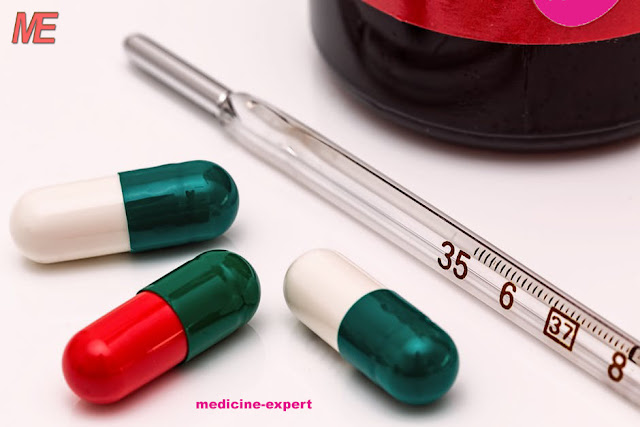Characterization of antimicrobials
Anti-disease operators: Antibiotics are the creation therapeutic experts of microbial or made or semi-built commencement which in cut down obsession quell the improvement of various microorganism.
The course of action of anti-disease specialists
* In light of the compound structure
* In light of the start
* In view of the extent of development ( scope of activity)
* In view of the strategy for movement.
* In view of the effects of their development.
* In view of the course of the association
Classification of anti-poisons in view of engineered structure:
1. Starch containing Antibiotics:
2. Unadulterated saccharides anti-poisons: representations; Streptozotocin
3. Aminoglycosides: cases; Streptomycin
4. N/O glycosides: eg. Chromomycin
5. Other: eg; Lincomycin
6. Macrocyclic lactone anti-poisons: eg. Erythromycin
7. Quinolones anti-poisons; eg. Fluroquinolone
8. N-containing heterocyclic anti-poisons: eg. Beta-lactam
9. O-containing heterocyclic anti-poisons: eg. Cycloserine
10. Alicyclic antimicrobials: eg. Cycloheximide
11. Fragrant anti-microbials (Nitrobenzene): eg. Chloramphenicol
12. Aliphatic amine antimicrobials: eg. Spermidine
13.Peptide antimicrobial: eg. Polymyxin, Bacitracin, Gramicidin
Classification of antimicrobials in view of the reason:
1.Microbial reason:
I. Bacterial reason:
- Bacillus polymyxa: Polymyxin
- Chromobacter violaceum: Bacitracin
- Micromonospora spp: Gentamycin
ii. Parasitic reason:
- Penicillium notatum: Penicillin
- Cephalosporin spp: Cephalosporin
iii. Actinomycetes cause:
- Streptomyces griseus: Streptomycin
- S. Venezuela: Chloramphenicol
- S. erythreus: Erythromycin
- S. Mediterranee: Rifampicin
2. Semi-built antimicrobials:
Cases:
Amoxycillin, Ampicillin, Doxycycline, Tigecycline, Sulfonamide et cetera
3. Built anti-microbials:
Cases:
Chloramphenicol, 4-quinolones, Sulfonamide
Classification of antimicrobials in view of the extent of activity (scope of activity):
1.Narrow territory:
- Dynamic towards by and large fewer microorganisms.
- Cases: macrolides, Polymyxin
2. Coordinate range:
Dynamic towards Gram Positive infinitesimal living beings and what's more some central and UTI causing Gram-negative microorganisms.
Cases: Aminoglycosides, Sulfonamide
3. Thin Broad range:
Dynamic against Gram-positive and gram-negative
Cases: Beta-lactam
4. Wide range:
Dynamic against Gram positive and Gram negative except for Pseudomonas and Mycobacteria.
Cases: Chloramphenicol, Tetracycline
5. Threatening to mycobacterial anti-disease operators:
Cases: Ethambutol, Rifampicin, Isoniazid, Pyrazinamide
Classification of anti-poisons in view of Mode of movement:
1. Inhibitor of cell divider amalgamation/Peptidoglycan Inhibitors:
Cases:
- Beta-lactam; Penicillin
- Bacitracin
- Cycloserine
- Phosphomycin
- Cephalosporin
- Vancomycin
2. Inhibitor of protein amalgamation:
Cases:
- Streptomycin
- Aminoglycosides
- Fusidic destructive
- Antibiotic drug
- Mupirocin
- Chloramphenicol
- Macrolides
3. Inhibitor of Nucleic destructive amalgamation:
Cases:
- Quinolones
- Ciprofloxacin
- Nalidixic destructive
- Metronidazole
- Nitrofurantoin
4. Inhibitor of folic destructive amalgamation (Folate antagonistic)
Cases:
- Sulfonamide
- Trimethoprim
5. Inhibitor of the cytoplasmic layer:
Cases:
Polymyxin; Colistin
Classification of anti-poisons in light of the effects of their development:
1. Bactericidal:
Takes out minuscule living beings
Cases: Aminoglycosides, Penicillin, Cephalosporin
2. Bacteriostatic:
Quells the advancement of microorganisms
Cases: Sulfonamide, antibiotic drug, chloramphenicol, trimethoprim, macrolides, Lincosamide
Classification of anti-poisons in light of Route of association:
1. Oral anti-poisons:
- Destructive stable anti-poisons,
- Outlines; Penicillin V
2. Parenteral course:
- Intravenous association
- Outlines; Penicillin G












ConversionConversion EmoticonEmoticon